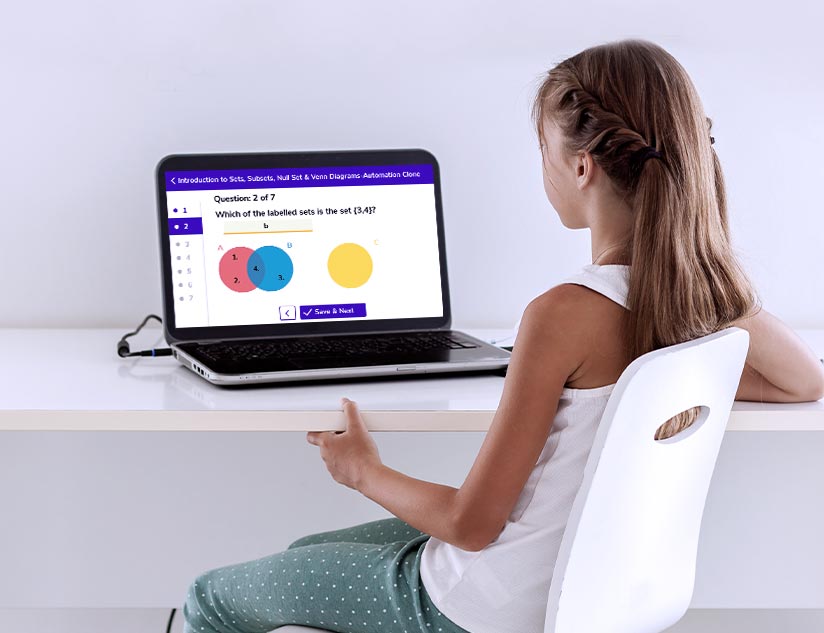Why Question & Test Interoperability (QTI) Compliance is Important to Educational Publishers
May 4th, 2022
The IMS Global Learning Consortium develops and maintains standards used by the assessment community to improve learning. The Question & Test Interoperability® (QTI®) standard is an open format that allows the interoperability of assessment items and tests. The standard helps define and identify the points of interoperability, protocols, and structures so that it saves time and money for educational publishers during the creation and distribution of assessments.
The QTI® standard has enabled the convenient exchange of items, tests, and results in data between authoring tools, test constructional tools, item banks, assessment delivery systems, and various learning systems. In addition, it helps design the structure of questions, assessments, and results through XML data binding. XML binding is essential because it is already extensively used for exchanging questions between different authoring tools and publishers.
About QTI 3.0 and QTI Compliance
The latest version of QTI 3.0 aims to address some issues of the earlier versions of QTI v2.1 and APIP 1.0.
Some of the significant features included in QTI 3.0 are:
- Better interoperability and increased consistency of rendering assessment content.
- Greater support for critical HTML5 elements and other web-friendly markups enables web component implementations.
- Access to shared vocabulary for standard presentation or display.
- Addition of streamlined and integrated APIP and assessment accommodation features to the full QTI® specification.
- Increased accessibility support incorporating W3C specifications and accessibility best practices.
- Native support for Computer Adaptive Testing so that it can better cater to each student’s ability.
- Native support for Portable Custom Interactions (also referred to as Technology-Enhanced Items or TEI).
What is QTI® Compliance?
Assessment creation, delivery, and results are the primary focus of the QTI® standard. This standard helps develop and maintain an assessment ecosystem in which the item type and test result data inform item banks, content authoring tools, LMSs, and test delivery platforms. It enables assessments to reflect daily instruction or individual subject mastery better. It also provides support to students that need accessibility accommodations.
Above is why education publishers consider QTI® the gold standard for ensuring interoperability and accessibility in digital assessments. The latest QTI 3.0 version has a definitive set of features and functionality related to web and accessibility standards. The version is also equipped with dynamic tools that play a crucial role in connecting assessment to learning.
For instance, interoperable technology can deliver test items with advanced features, such as mathematical symbols, graphing capabilities, etc. In addition, interactive and technology-enhanced tools can provide a more interactive and engaging educational experience.
However, it is important to remember that some products and vendors in the market claim QTI® compliance or use the QTI® name. But, educational publishers should aim for IMS-certified QTI standards because they are the more reliable, adhering to stringent IMS guidelines. In addition, IMS members can use the QTI Conformance Certification program and online validation tool to test their assessment products against the QTI specification, ensuring the highest levels of interoperability across the educational community.
Significance of QTI® Compliance for Education Publishers
The key advantages of QTI compliance include:
- It helps publishers swiftly move from paper-based assessments to digital assessments while ensuring savings in terms of money, time, implementation, and integration efforts. Publishers can create simple quizzes, formative assessments, or high-stakes/summative assessments with ease.
- It helps improve the assessment ecosystem by facilitating the exchange of question items, tests, and results data between authoring tools, test construction tools, item banks, learning environments, and scoring administrative systems.
- It can be used to capture and exchange individual student results of individual items or complete assessments across multiple contexts, such as class, school, district, or state. Thus, with QTI reporting and analysis, publishers can help connect assessment to learning and drive desired learning outcomes for their users.
Role of Digital Learning Platforms in QTI® Compliance
Educational publishers can ease compliance by adopting a digital publishing and learning platform built on the LTI module and ensuring QTI compliance. For best outcomes, ensure QTI compliance in all four categories:
1. Authoring and Editing Systems
2. Delivery Systems
3. Item and Test Bank
4. The QTI® Content
When digital learning platforms ensure compliance in all four categories, publishers can create completely portable assessments. It allows publishers to choose from many question templates, create and sell questions and assessment banks, and embed assessments in content. They can even upload existing QTI® compliant questions in the assessments in XML format. Additionally, such platforms can create best-of-breed solutions by combining delivery and authoring modules from multiple vendors.
MagicBox™ is a digital learning platform built on the premise of Question & Test Interoperability® and ensures a seamless experience for both publishers and students. In addition, it can readily integrate with your existing publishing ecosystem. Contact us to know more.















